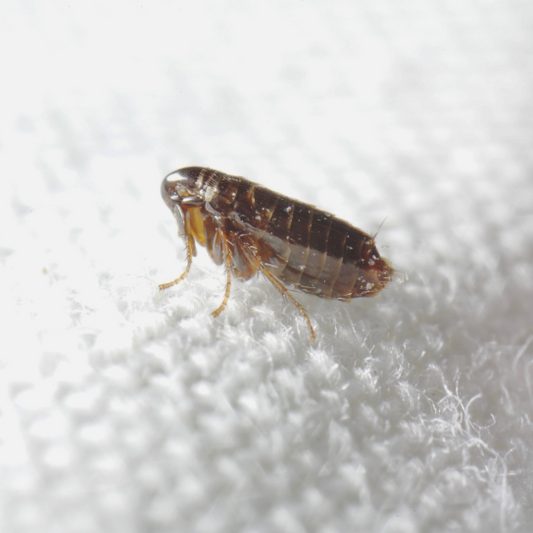
How to Get Rid of Moles in Your Garden: Trap Placement Tips & Best Mole Control Methods
Got molehills popping up overnight? Learn how to identify mole activity and eliminate them for good using proven claw and tunnel mole traps. This guide covers the most effective placement strategies, when to trap, and which trap type is best for your garden.
Molehills ruining your lawn? You’re not alone. Moles can turn a pristine garden into a minefield of mounds seemingly overnight. These elusive creatures rarely show themselves above ground — but the damage they cause to turf, roots, and flowerbeds is unmistakable.
In this guide, we’ll explain how to spot mole activity, what attracts moles to your property, and most importantly, how to get rid of moles using tried-and-tested traps — including both claw mole traps and tunnel mole traps.
Signs of Mole Activity in Your Garden
Moles are solitary, insect-eating mammals that live underground. They rarely surface, but the signs of their presence are obvious:
- Fresh molehills — conical piles of soil pushed up from tunnels
- Raised ridges or runs under the lawn
- Uneven, sinking turf as a result of tunnel systems
- Wilting plants caused by root disturbance or soil disruption
You’re most likely to notice mole activity in spring or autumn, especially after rain when the soil is softer for digging.
Why Are Moles in My Garden?
Moles are drawn to moist, fertile soil because it attracts their main food source: earthworms and insects. Gardens with rich topsoil, composted beds, and well-watered lawns are ideal hunting grounds.
While moles don’t eat plants, their tunnelling damages roots, disturbs lawns, and makes mowing difficult — not to mention the unsightly molehills.
The Most Effective Way to Get Rid of Moles: Trapping
Mole repellents and sonic devices often produce mixed results. For lasting success, trapping is the most reliable and humane way to deal with moles. Once you identify the active tunnels, placing the right trap in the right place is key.
We offer two main types of mole traps, each suited for different situations:
🦴 Claw Mole Traps
Also known as scissor traps, claw mole traps are easy to set and highly effective. They work by triggering a spring-loaded claw mechanism when a mole pushes against the central trigger plate.
Best for:
- Shallow tunnels near the surface
- Straight mole runs
- Easy visual checks (above-ground handles)
Tips for success:
- Wear gloves to avoid human scent
- Position directly into the tunnel
- Cover with a bucket or turf to block out light
🔧 Tunnel Mole Traps
Tunnel traps (also known as Duffus-style traps) are placed entirely underground, ideal for deeper or less visible runs. They trap the mole as it travels through the tunnel in either direction.
Best for:
- Deeper mole tunnels
- Experienced users or areas with high mole activity
- Less risk of trap tampering by pets or wildlife
Tips for success:
- Identify a well-used run (straight and regularly reopened)
- Insert into tunnel, aligning both openings
- Ensure smooth soil contact to prevent trap jamming
How to Set a Mole Trap: Step-by-Step
- Locate an active mole tunnel – Use a stick or probe to find soft spots between molehills. Choose straight runs over feeder tunnels.
- Clear out the tunnel – Remove loose soil to create space for the trap. Keep the tunnel intact.
- Set your trap – Follow instructions for your trap type. Always wear gloves.
- Disguise the setup – Cover with turf, soil, or a bucket to block out light and avoid alerting the mole.
- Check daily – Once you catch a mole, you may need to repeat the process if others remain.
When to Trap Moles
Moles are active all year, but trapping is especially effective in spring and autumn, when tunnelling is most visible. After catching a mole, monitor for new activity — it's possible more than one mole is using the area.
Why Choose Our Mole Traps?
✅ Tried and tested designs used by professionals
✅ Suitable for all soil types and garden sizes
✅ Durable, reusable and cost-effective
✅ Trusted by homeowners and groundskeepers alike
Whether you’re dealing with a single mole or multiple tunnels, using the right trap increases your chances of success — and helps restore your garden faster.
Final Mole Control Tips
- Always wear gloves to avoid scent transfer
- Avoid disturbing the area once the trap is set
- Re-bait or reposition if you don’t see results within 48–72 hours
- Consider trapping in multiple spots for heavy infestations
Take Back Your Lawn — One Trap at a Time
With the right traps and placement, you can get rid of moles quickly and humanely. Whether you prefer the ease of a claw trap or the precision of a tunnel trap, both options offer reliable, no-nonsense mole control.
Other Articles
View all-

How to Get Rid of Fleas in the House Fast: The ...
Struggling with fleas in your home? Discover how to kill fleas fast with our triple-action spray, plus expert tips for lasting flea prevention and control.
How to Get Rid of Fleas in the House Fast: The ...
Struggling with fleas in your home? Discover how to kill fleas fast with our triple-action spray, plus expert tips for lasting flea prevention and control.
-

Bed Bug Infestation? Here’s How to Kill Them an...
Think you have bed bugs? Learn how to identify, treat, and eliminate them using our HSE-approved spray and a proven multi-step bed bug control plan.
Bed Bug Infestation? Here’s How to Kill Them an...
Think you have bed bugs? Learn how to identify, treat, and eliminate them using our HSE-approved spray and a proven multi-step bed bug control plan.
-

How to Get Rid of Rats and Mice Humanely: Natur...
Looking for a natural way to get rid of rats and mice? Discover our humane traps and peppermint-based repellents for safe, effective rodent control at home.
How to Get Rid of Rats and Mice Humanely: Natur...
Looking for a natural way to get rid of rats and mice? Discover our humane traps and peppermint-based repellents for safe, effective rodent control at home.


